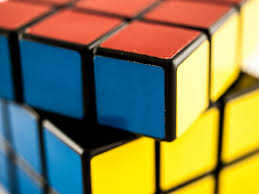Could This be Hungary’s Greatest Invention?
Fact: The Rubik's cube is a Hungarian invention
Table of Contents
Photo by William Warby
When Erno Rubik first created the best-selling puzzle in history, he was not actually thinking about toys or making millions of dollars; rather, he was trying to solve a structural design conundrum: "How could the blocks move independently without falling apart?" This was his initial concern, and it was only after he decided to cover each side with a different color and start playing with the prototype cube that he realized what happened to the colored squares when mixed up – random combinations of movements would almost never get the six sides back to solid colors. It was at this point that Mr. Rubik truly realized what he had created. In just under a month, Erno Rubik was able to solve his own invention using mathematical calculations, and an international phenomenon was born…The Rubik’s Cube!
I can remember holding in my hand a late 70s/early 80s example of the Rubik’s Cube, manufactured from some sort of hardened white ceramic material, its squares covered in decals of pastel rather than the fluorescent stickers most of us have come to know from the black plastic mass-marketed cubes of the 1980s. My mom’s best friend’s husband, a professor of computer science at Johns Hopkins University in Baltimore, MD, had purchased the cube while at a conference in Europe. Like its inventor, he too solved it mathematically, though in under a week. This was at least a year or two before the cube became the 1980s phenomenon that was to spread throughout the toy-buying world.
The inventions however, don’t stop there. While not nearly as exciting as everyone’s favorite toy, Hungarians, János Irinyi and Imre Bródy, invented the noiseless match in 1936 and the krypton electric bulb in 1930 respectively. Despite the country’s struggle for identity after World War II (losing a few inventions and inventors along the way), they are still remembered in things as simple (and widely used) as the Biro ballpoint pen, invented by Bíró László József, and in things as crazy as holography – the technique of using light frequencies and lasers to create three dimensional images! Communication of the future, perhaps?
Hungary is clearly a place of amazing inventions and the people behind them. Why not learn Hungarian and explore a very interesting country? Beware, though: Hungarian belongs to the Finno-Ugric language family, and unless you already speak Finnish or Estonian, you are in for quite a challenge -- particularly if your first language is Indo-European, such as English or any of the Romance Languages. Learn more about this fascinating country, its language, statues and psychics with our True or False Game on Hungary!




